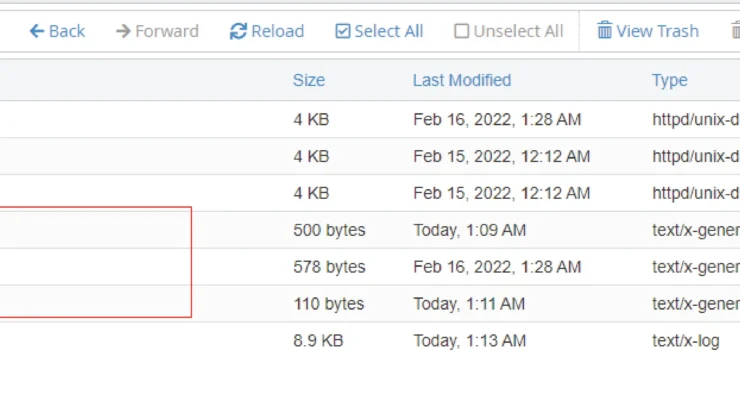
Crafting a high-performance Symfony application hinges on a robust hosting infrastructure capable of handling demanding workloads.
Optimizing your Symfony application’s performance directly impacts user experience, application responsiveness, and overall success in a competitive online landscape.
Choosing the right hosting environment, with attention to specific Symfony performance characteristics, is crucial for scalability, speed, and maintainability.
This article delves into the nuanced considerations when selecting the best hosting for Symfony applications, providing a comprehensive guide to identifying the ideal platform for optimizing performance.
Understanding the key performance metrics that influence Symfony’s behavior – including database queries, caching strategies, and server resources – is pivotal in this journey towards optimal hosting.
From shared hosting options to dedicated servers, each hosting model presents a unique set of capabilities and limitations concerning performance for Symfony applications.
A deeper exploration of specific Symfony performance requirements – such as optimal PHP versions, appropriate server configurations, and efficient caching mechanisms – will empower you to make an informed decision.
This exploration of best hosting for symfony perf offers practical insights and actionable recommendations for optimizing your application’s speed and scalability on various hosting platforms. Selecting the correct hosting solution will provide significant benefits, from enhanced user experience to improved search engine rankings.
Server Resources and Symfony Performance
Optimizing Symfony applications demands a deep understanding of server resources, as their availability directly impacts application performance.
The right hosting solution provides adequate CPU, RAM, and storage capacity to handle peak demands, preventing bottlenecks and ensuring responsiveness.
Understanding Symfony’s resource consumption patterns is critical when selecting a hosting plan.
High-volume data processing, frequent database queries, and extensive caching mechanisms all contribute to the server load.
Selecting a hosting provider with scalable resources ensures a smooth user experience during peak traffic periods, essential for a best hosting for symfony perf strategy.
Assessing the hosting provider’s ability to dynamically adjust resources to meet varying application needs is crucial.
Sufficient RAM is essential to maintain optimal application speed, especially for applications with extensive data processing requirements, frequent database interactions, and complex data structures.
A suitable hosting solution will accommodate the expected memory demands of the application, considering factors like the number of users, data volume, and the application’s architecture.
The capacity of the hosting server’s CPU directly affects the speed at which Symfony applications execute queries, process requests, and handle data manipulation.
Choosing a hosting platform that can meet the CPU demands of the application, especially during peak hours, ensures the application remains responsive and efficient.
Storage space, particularly its speed and capacity, plays a significant role in Symfony application performance, influencing factors like loading times for static assets and database query speed.
Insufficient storage space could lead to slow response times and degraded user experience. A hosting plan should provide enough storage capacity to accommodate application files, database data, and user-generated content.
The overall architecture of the hosting infrastructure, including the server type and network configuration, impacts Symfony performance.
A fast and reliable network connection ensures minimal latency for data transfer between the server and the user, leading to faster loading times for web pages, and reducing the time needed for users to interact with the application.
Choosing a hosting provider that offers a robust and reliable network architecture contributes to a positive user experience, critical for application success.
These considerations are pivotal in choosing the best hosting for Symfony performance, dictating the overall application experience.
Server Resources and Symfony Performance
Optimizing Symfony applications demands a deep understanding of server resources, as their availability directly impacts application performance.
The appropriate hosting solution provides sufficient CPU, RAM, and storage capacity to manage peak demands, preventing performance bottlenecks and ensuring responsiveness.
Understanding how Symfony utilizes resources is crucial when choosing a hosting plan for best hosting for symfony perf.
High-volume data processing, frequent database queries, and extensive caching mechanisms significantly influence server load.
Selecting a hosting provider with scalable resources guarantees a smooth user experience during peak traffic periods, a critical component of a successful best hosting for symfony perf strategy.
Evaluating the hosting provider’s capability to dynamically adjust server resources to meet fluctuating application demands is essential.
Adequate RAM is critical for maintaining swift application speeds and smooth operation, especially during intensive processing.
A robust hosting environment that can handle the anticipated traffic levels and data volumes is fundamental.
Symfony applications are characterized by specific resource needs that require careful consideration. This includes a detailed understanding of expected data volume and frequency of user interactions.
A significant factor in selecting the ideal hosting solution for optimal Symfony performance is assessing how the provider handles sudden spikes in traffic.
Monitoring server response times during both low and high-usage periods provides insight into the hosting environment’s stability and scalability.
Choosing a hosting provider with a proven track record of managing complex applications with resource-intensive tasks like extensive data processing is a vital aspect of best hosting for symfony perf.
Server resource management is key for maintaining a consistently high level of performance and avoiding performance degradation, especially during peak traffic times.
The selection process should prioritize a platform that can accommodate anticipated scaling requirements and future growth. A hosting provider with a history of reliable support and proactive resource management is essential to achieving optimal Symfony performance.
Careful consideration of server configurations like CPU cores, memory allocation, and storage capacity is paramount for selecting optimal hosting for symfony applications. These factors dictate the responsiveness, speed, and scalability of the application.
A key aspect of a best hosting for symfony perf strategy is anticipating and addressing resource bottlenecks that might arise under various operational conditions.
Measuring the performance of various hosting options under different simulated traffic loads is critical in identifying the optimal provider.
Ultimately, a hosting solution designed to handle anticipated demands, adjust resources dynamically, and maintain speed and reliability is crucial for successful Symfony application performance. This is crucial for a best hosting for symfony perf strategy.
Server Configuration for Symfony Performance
Optimizing server configuration is crucial for achieving optimal Symfony application performance.
A poorly configured server can significantly impact the speed and responsiveness of a Symfony application, hindering user experience and potentially affecting search engine rankings.
This aspect of hosting goes beyond simply selecting a hosting provider; it dives into the technical intricacies of configuring the server environment to best support Symfony applications.
Choosing the right hosting provider is just the first step; effectively configuring the server-side resources is equally important for maximizing Symfony application performance.
A well-configured server, tailored to the specific needs of Symfony applications, plays a pivotal role in achieving high performance.
A significant factor in Symfony performance involves ensuring that the web server (e.g., Apache or Nginx) is properly configured to handle requests efficiently.
This includes optimizing settings like caching mechanisms, connection limits, and request processing timeouts.
Properly configured server-side components, including PHP versions, extensions, and memory limits, can greatly impact the performance of Symfony applications.
Server-side resources like RAM and CPU are vital for Symfony application execution.
Insufficient RAM can lead to slowdowns and application crashes, impacting overall performance. A hosting provider offering high memory allowances and sufficient processing power is essential for robust Symfony application performance.
The application server, often running PHP, needs appropriate configurations to optimize for Symfony’s architecture.
Efficient use of caching mechanisms on the server side can dramatically reduce the load on database queries and improve page load times.
For example, implementing opcode caching, such as APC or OPcache, can significantly speed up script execution by storing precompiled bytecode.
Using a caching layer between the application and the database is essential for reducing database load and improving response times. Proper configuration of this caching layer, such as Redis or Memcached, is key for a positive impact on Symfony applications’ performance. Symfony applications themselves can contribute to efficient caching via their own built-in mechanisms.
Correctly configuring the server environment, including appropriate PHP versions and extensions, can significantly affect Symfony performance.
The correct PHP version, compatible with Symfony’s dependencies, is vital. Furthermore, necessary extensions and modules for various features, like image manipulation or other specific functionalities, must be correctly installed and configured. Choosing a hosting provider that prioritizes compatibility and provides updated PHP versions can directly affect the overall Symfony application performance.
Implementing appropriate load balancing strategies can greatly improve Symfony performance under high traffic conditions.
By understanding the intricacies of server configuration and using optimal settings, developers and hosting providers can enhance Symfony application performance drastically. Such configuration is paramount when seeking the best hosting for Symfony performance.
Caching Strategies for Symfony Performance
Optimizing caching strategies is crucial for boosting Symfony application performance, particularly in high-traffic scenarios.
Effective caching minimizes database queries and reduces server load by storing frequently accessed data in memory or a fast storage mechanism.
This dramatically improves the response times for user requests, which is paramount for a positive user experience.
Symfony’s built-in caching mechanisms are powerful, but tailoring them to specific application needs is vital for significant performance gains.
For instance, caching frequently accessed database results, such as user profiles or product listings, with appropriate expiration times, ensures that data is readily available without excessive database interaction. This directly relates to the best hosting options for a Symfony application.
Choosing the right caching layer, whether it’s Memcached, Redis, or a dedicated caching service offered by the hosting provider, is critical for Symfony performance.
Different hosting solutions provide various caching options, influencing the application’s ability to scale and handle peak loads.
Properly configured caching, paired with appropriate hosting options, directly translates to faster loading times and a more responsive Symfony application.
The specific caching strategy implemented will vary based on the complexity and characteristics of the Symfony application. For instance, a large e-commerce site needs a more robust and scalable caching system than a simple blog. Selecting a hosting provider adept at handling these different caching implementations is thus a critical element when optimizing a Symfony application.
Choosing the right caching strategy and leveraging the capabilities of a hosting provider tailored to Symfony applications are essential for achieving optimal performance. Careful consideration of caching is vital for maximizing the benefits of the best hosting solutions and securing peak performance.
Optimizing Symfony performance is crucial for delivering a seamless user experience and maintaining a robust application, especially for demanding projects.
Choosing the right hosting environment can significantly impact the speed and responsiveness of your Symfony application, directly affecting key metrics like page load times and API response latency.
This article has explored the critical factors to consider when selecting the best hosting for Symfony performance, highlighting the importance of server resources, technologies like Nginx and Varnish, and the role of database optimization.
From our analysis, it’s evident that the best hosting for Symfony performance isn’t a one-size-fits-all solution. The ideal choice depends heavily on the specific needs and characteristics of your application, including the volume of traffic expected, the complexity of the Symfony application, and the required scalability.
Ultimately, understanding these variables allows developers to select a hosting platform that provides the necessary resources to ensure top performance. A well-optimized Symfony application, powered by the best hosting solution, can contribute to improved user engagement, increased conversions, and overall business success. By carefully considering factors like server configuration, caching mechanisms, and database management, developers can ensure their Symfony applications achieve optimal performance and scalability, making the right choice of **best hosting** paramount for success.






